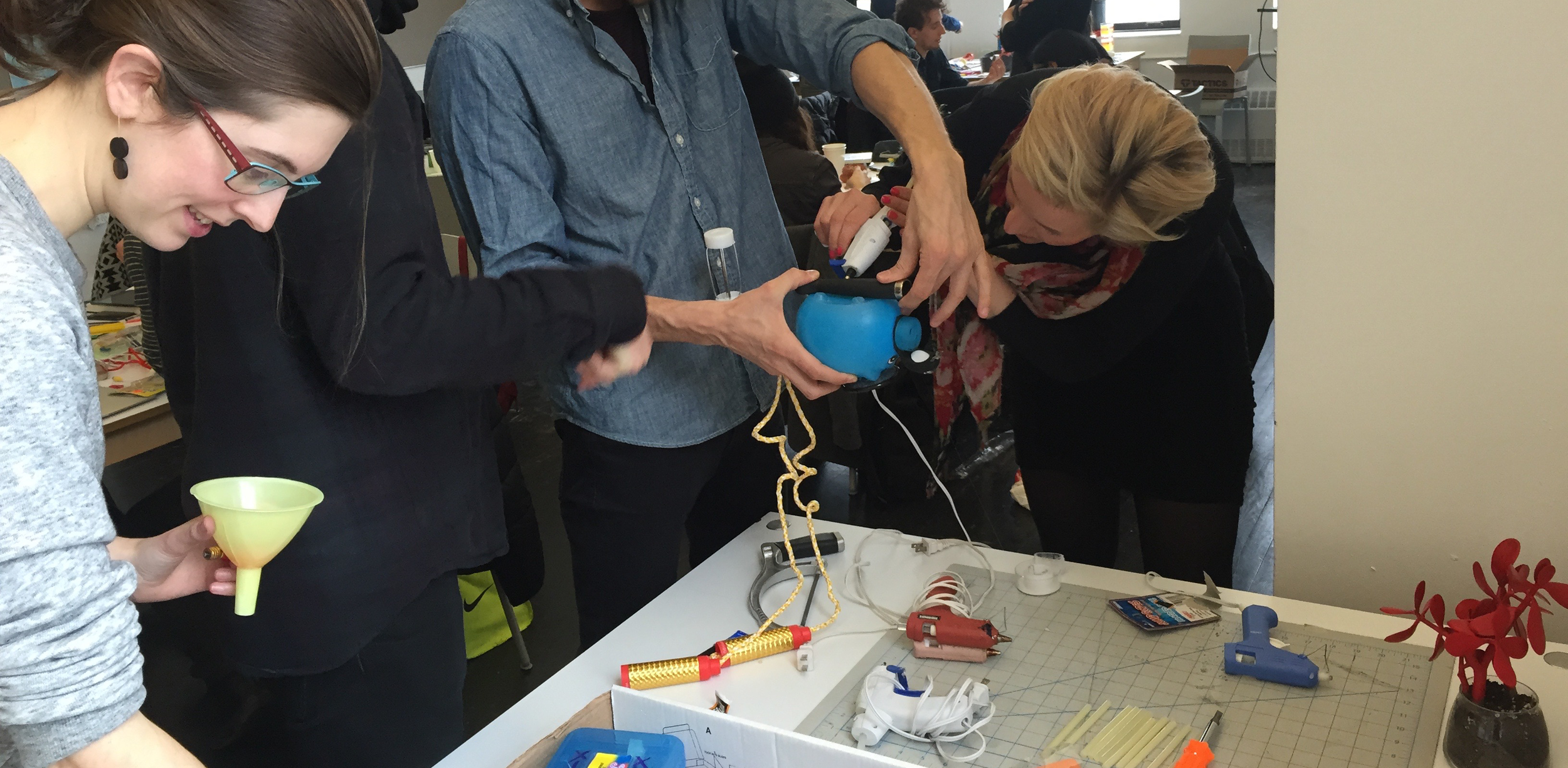Graduate students from Parsons Transdisciplinary Design MFA program partnered with Ford Motor Company and visiting scholars from the Stockholm School of Entrepreneurship to imagine the future of mobility with speculative design.
Conducted over five weeks in April and May 2015, six teams were challenged to push past current ideas surrounding mobility, transportation and access. Each project proposed a new way of addressing issues of mobility, ranging from gridlock prevention and car-sharing solutions, to waste management and mental health.

At the core of this project was the application of speculative design. Defined as a “means of speculating about how things could be, as a tool to create not only things but ideas.”[Dunne and Raby, Speculative Everything], it’s a provocative way to approach problem-solving from nontraditional avenues. It’s imperative that we apply the strategies of speculative design because traditional interventions are insufficient to tackle the wicked problems that plague our world.
Speculative design opens up an alternative space fueled by emotional connection and experimentation. It leverages the language and visualization of design with the systems of technology to propose palpable cultural interventions. Less about presenting solutions for immediate action, speculative design creates conversation and opens up realms of possibility.
A three-day weekend of focused exploration and prototyping with seven graduate students from the Stockholm School of Entrepreneurship kicked-off the Parsons mobility project. To begin, students journeyed to unfamiliar areas of the city to observe their surroundings with a detached perspective. Every piece of litter, restaurant smell and passing conversation provided insight as to how the city functions and how people move through it.
Back at the studio, students immediately jumped into making. They used mundane dollar store materials to prototype possible mobility solutions of tomorrow. After hearing from guest speakers – ranging from a professional futurist to a transportation engineer – students incorporated feedback on their initial prototypes to hone their design idea.
After the intensive weekend workshop, the students took a step back to consider how their ideas fit into a larger system. Key to this strategy was the speculative diagram. It’s a visual way to understand how a change in one area – such as the seating arrangement of a subway car – could have a domino effect in other realms, such as the labor market and public policy. This visualization allowed the designers to imagine potential scenarios and to map plausible knock-on effects. The animation below shows how a speculative diagram is built, using the Imagined Bus project as an example.
Iterate, iterate, iterate. By continually testing the projects with outside users, incorporating quick prototyping sessions and taking critiques into account, the Parsons students were able to expose the strengths and weaknesses in their designs. Working with tactile objects was critical to continually honing their projects.
So much of speculative design’s power is exploring ideas at a systems level. But all great ideas must come down to ground level. Through the process of a final presentation and the summarization of the six projects through this website, the Parsons students were able to consolidate their design speculations in digestible ways.